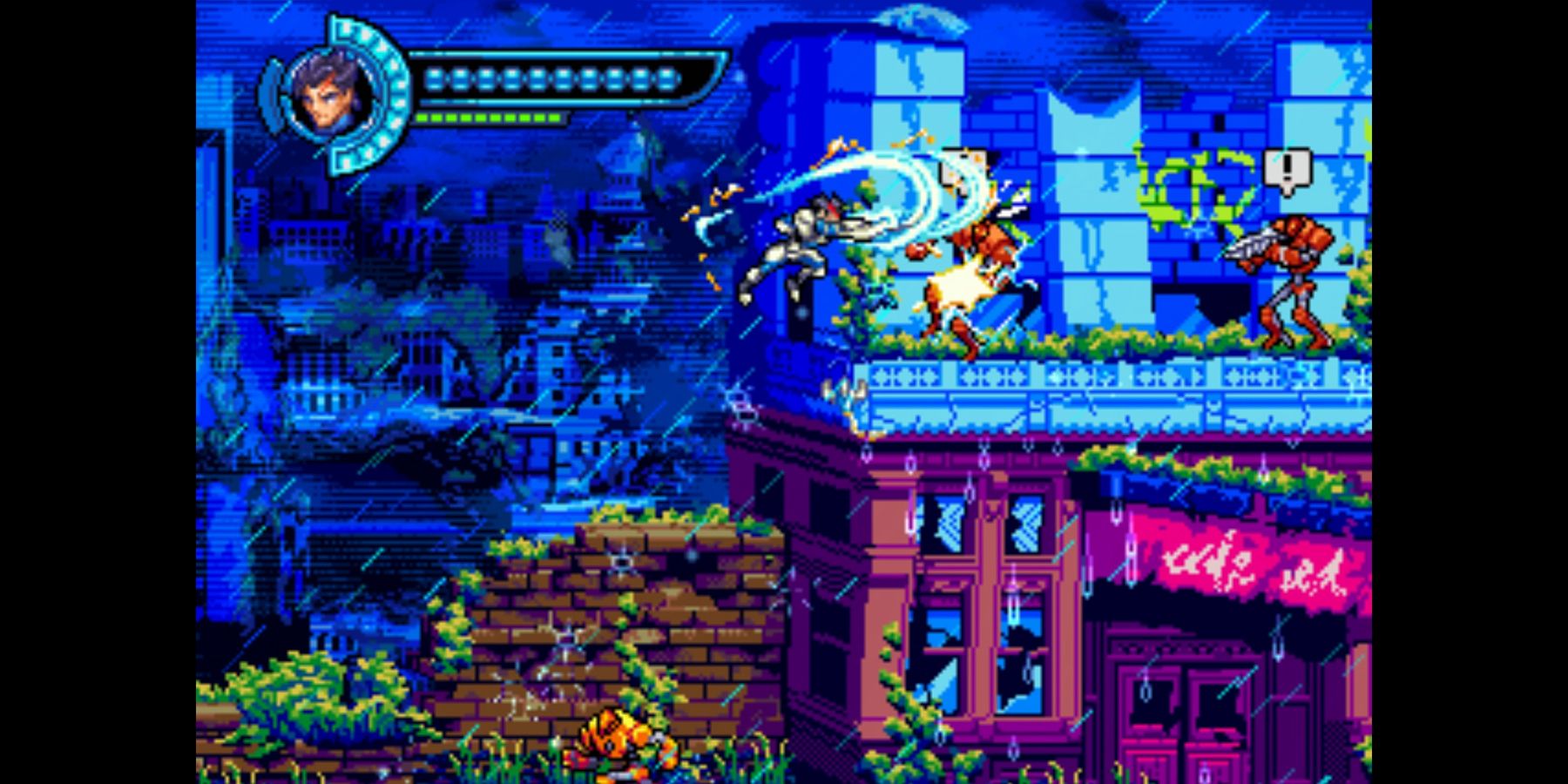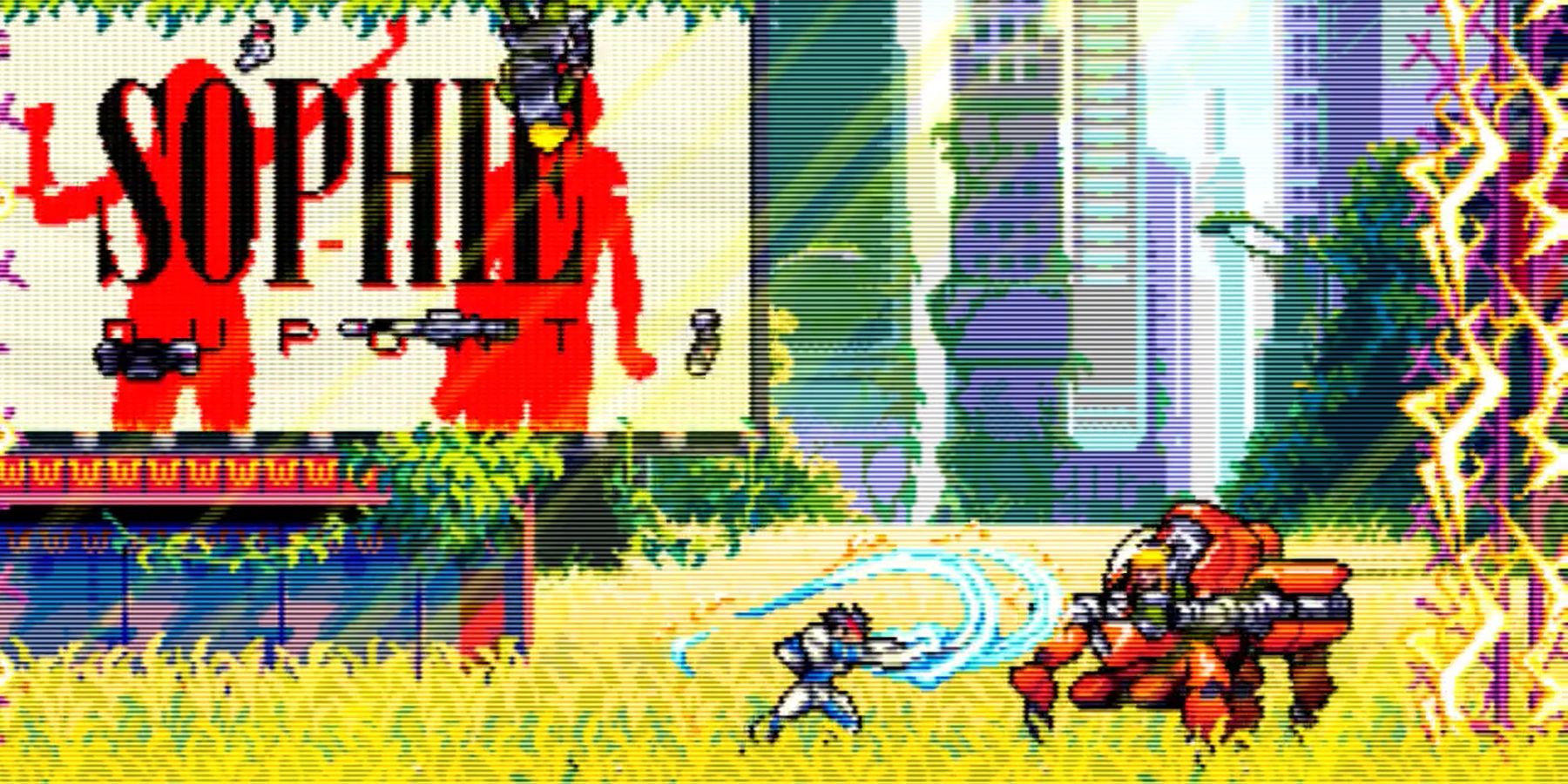At the end of September, Zenovia Interactive launched its first title Steel Assault; a post-apocalyptic sidescroller with loads of action. Like many retro-inspired indie games, Steel Assault pays homage to dozens of classic 16-bit era titles like Contra and Castlevania. Players take the role of Taro Takahashi and navigate a United States that has fallen under an evil dictator named Magnus Pierce. Unlike many other sidescrollers, Taro eschews guns in favor of an energy whip, fisticuffs, and a deployable zipline.
Certain titles still manage to push the limits of movement mechanics in 2D titles, like Nintendo's recently released Metroid Dread. However, truly fresh movement abilities are something of a rarity in 2021, as there are only so many novel traversal mechanics for two dimensions. Zenovia founder and lead designer Sri Kankanahalli spoke with Game Rant about Steel Assault's eclectic mix of influences from hit movies to obscure arcade titles.
RELATED: Elementallis' Ivan Ruiz Lozano Discusses Puzzle Design, Legend of Zelda Inspirations
Wonderful Toys
While Steel Assault isn't the first 2D game to use ziplines as a mechanic, Kankanahalli said he was unaware of other titles that featured it when he first programmed the move. Rather, his inspiration hearkens back to a touchstone from 1980s popular culture.
"It was an idea suggested to me by the original artist for the game, a guy named Daniel Garcia. I think he got the idea from Tim Burton’s Batman movie from the 80s. There’s a scene where Batman uses a similar mechanic to rescue Vicki Vale from the Joker."
Taro can swoop down on enemies by launching a two-directional wire, just as Batman snags Vicki Vale from the Joker with his handy line-launcher; a gadget that makes an appearance in Rocksteady's Batman: Arkham series. In 2D, the ability may seem less versatile, but it also becomes more essential. Players must set up ziplines mid-fight in order to avoid falling and dodge projectiles simultaneously. In the course of fleshing out the mechanic, Kankanahalli learned of two other obscure titles that featured a similar gimmick.
Lost Gems

Sometimes mechanics and conventions are lost to time for good reason. Over the years 2D platformers have shed a number of mechanics, tropes, and bad habits. Sometimes, cool mechanics get lost in the shuffle and later resurface in interesting ways. Kankanahalli's development of the zipline mechanic is an example of convergent evolution in games. After programming the zipline mechanic, he discovered two much older games that use a similar system for movement.
"There’s a game called Roc’n Rope by Tokuro Fujiwara, the guy who made Ghouls 'n Ghosts, if you’re familiar with that title. It was one of his first games. There’s also a Konomi game called Miracle of Almana."
Both Roc'n Rope and Miracle of Almana boast zipline-wielding archaeologists who must delve into caverns to search for secret treasure. Neither game is particularly well known, and both are fairly primitive, but their evocative movement mechanic had both thematic and mechanical potential. One could argue that obscure titles lend themselves to reinvention more than famous classics.
RELATED: Narita Boy Developer Delves Into Its 1980s Themes
Many young creators strive to create unique mechanics, only to be frustrated when they discover someone else has done it first. But Kankanahalli had a more productive approach. Even though Steel Assault wasn't planned as a spiritual successor to Roc 'n Rope or Miracle of Almana, Kankanahalli studied these near-forgotten games for ideas to get the most out of his mechanic. That kind of research is crucial for developing modern, retro-inspired titles. Playing the original expression of a mechanic forces developers to see something stripped to its bare minimum, when every aspect of a game took up memory so it was included at the expense of other potential features.
Whip It Good

Many sidescrollers feature a broad range of projectile weaponry, and Taro will occasionally hop into vehicles armed with gun turrets to take out tougher enemies. But Kankanahalli did not want to simply retread familiar territory. Konami's Castlevania franchise, which may be seeing a new installment soon, was the primary influence for Steel Assault's action. He said it's a subgenre that has not been pushed to its limits yet. The energy whip forces players to get up close and personal, punching foes to charge the game's subweapons, or whipping them at longer range to deal serious damage.
As those familiar with bullet hell games know, systems that allow players to block and dodge projectiles are usually a cornerstone of survival. Taro can use his energy whip to cancel incoming enemy shots, which provides its own sense of flow. Kankanahalli has a tip for players who are struggling to defeat enemies or survive patterns: remember to slide. The slide provides players with a brief window of invulnerability, which can make all the difference in an intense firefight.
Steel Assault is available now for PC and Switch.
MORE: Byte Barrel Discusses Forgive Me Father's Comic Book Art Style and Retro Shooter Influences

